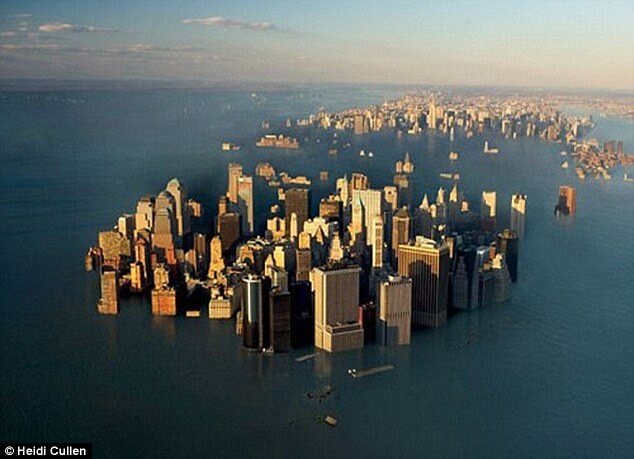Thwaites Glacier, a massive Antarctic glacial body about the size of Britain, has been discovered with a giant cavity by the scientists of NASA. This cavity is about the size of two-thirds of Manhattan. The discovery was made with the help of ice-penetrating radar and satellites with high-resolution lenses by researchers at NASA’s Jet Propulsion Laboratory. Scientists are worried about the speculation of what might happen if the glacier collapses entirely.
Scientists have told that this part of the cavity had around 14 billion tons of frozen fresh water restored in it and it was expanding at an exponential rate until now. The discovery is highly alarming and disturbing. It shows that not only the ice around the areas adjacent to the ocean is melting but also from underneath the thick ice sheets.
In case the 192,000 square kilometers wide Thwaites Glacier melts down, it can raise the sea level by 2 feet. This rise will wash away the coastal cities around the globe (Florida, Bangladesh, Shanghai, London, New York, and New Orleans, etc.), flood the island nations (the Maldives in the Indian Ocean or Kiribati in the Pacific, etc.) and lead to massive soil erosion. The sea level is expected to rise by the year 2300, but if the process picks the speed (due to raising global warming) countries won’t have time to plan against the natural catastrophe.
Thwaites is not just a massive reservoir of tons of freshly frozen water, it is also guarding the flow of nearby glaciers. If those glaciers also melt, sea level would rise not 2 but 10 feet at once. This will submerge many coastal cities in the sea instantly.
Glaciers in the Arctic and Northern Hemisphere has more stable and quicker melting rate than Antarctica.
A recent report published by Antarctic Research Centre at New Zealand’s Victoria University of Willington and McGill University in Canada has warned that melting ice sheets in Greenland and Antarctica may result in more extreme global weather conditions worldwide.
The study suggested pumping of billions and billions of tons of new, previously frozen cold freshwater into the ocean has the potential to slow the global oceanic conveyor belt network and regulate the climate. If not stopped on time, the process may pick up quick pace and situation might arise in a few decades.

